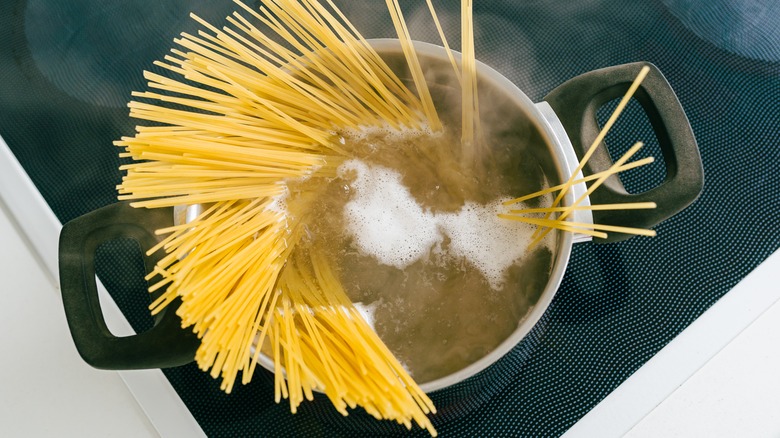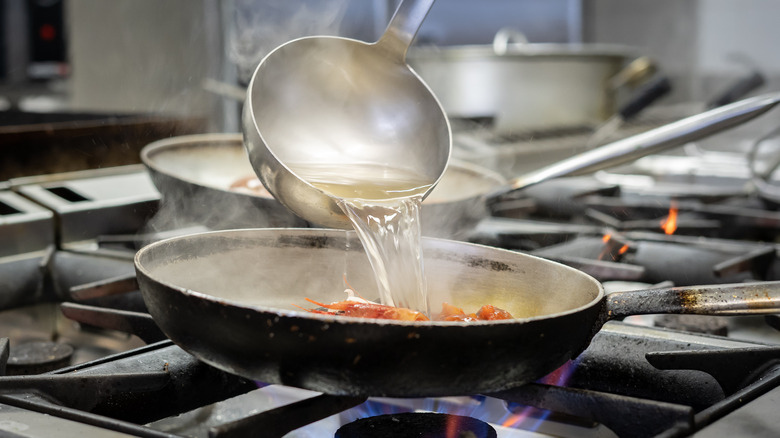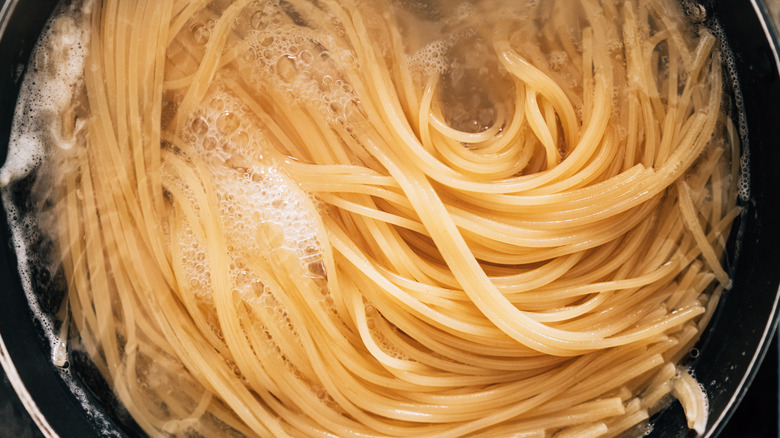Why There's A White Foam In Your Pasta Water
Boiling pasta may seem like the easiest thing to do in the kitchen, but there are some "rules" that many chefs swear by: salt your water, only add the pasta after the water boils, al dente is always better, and always save some pasta water. That last rule may seem a bit strange, considering that the water is cloudy, foamy, and can leave a film in the pot after it's strained. However, that foamy pasta water is liquid gold.
The white foam in pasta water is actually starch. The starch molecules in pasta act like sponges, absorbing water when exposed to heat and moisture. As the pasta cooks, the starch molecules expand to their limit and then release, creating a natural adhesive that causes the pasta to stick together. During the boiling process, this starch gradually disperses into the water, infusing the water with its delicious goodness. So, while all that foam and cloudiness in the water may seem a bit concerning, it is actually a sign that everything is going according to plan.
Starchy pasta water makes the best pasta sauce
Before straining the pasta, it is vital to scoop out a half-cup or more of the water and set it aside. This is because the starchy water serves two important functions when added to a pasta sauce. The first function is that it acts as a thickening agent. Many sauces and gravies are often thickened with a slurry of water and either cornstarch or flour. This helps prevent the unpleasant feeling of eating pasta drenched in what resembles ketchup water. Well, pasta water is essentially the same as that slurry — starch and water — so it provides the same thickness without requiring another cooking step.
The second function of the pasta water is that it acts as an emulsifier. Fat molecules from common sauce ingredients like oil, butter, or the cheese in a perfect cacio e pepe recipe become surrounded by starch molecules, which prevents them from separating from water. This creates a consistently smooth sauce that will evenly coat every piece of pasta. With any luck, there won't be a drop of it left on the plate at the end of dinner.
You need just enough water to cover the pasta
Because starch is such an important element in making pasta and sauce, it stands to reason that the leftover pasta water should have as much starch in it as possible. Professional chefs and home cooks alike often recommend boiling enough water to fully submerge the pasta by several inches, claiming this helps prevent the pasta from sticking to itself. However, this also dilutes the amount of starch in the water.
For the best results, there should be just enough water to cover the pasta in the pot. (Pro tip: The pasta might stick to itself at first because of the expelled starch acting like glue in the early stages of cooking. This can be avoided simply by frequent stirring.) After several minutes, the starch will dissipate into the water — where it needs to be — leaving the pasta free to wiggle around. And, the pasta water will have a higher starch content than usual, creating a whole host of added benefits at the sauce stage. It's definitely worth trying.



